160 years ago today, Cantares Gallegos by Rosalía de Castro was published, Spain’s first book in the Galician language. De Castro is regarded as the greatest Galician cultural icon, and marking the date of publication is Galician Literature Day in Spain. READ a bit more… (1863)
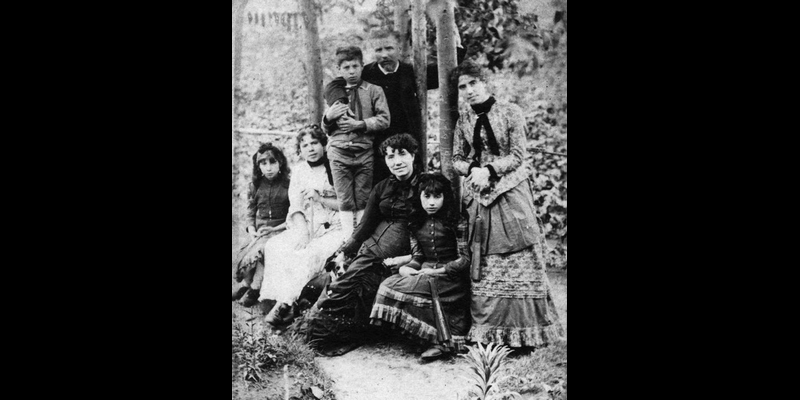
Around 2.4 million people have at least some degree of competence in the language, mainly in Galicia, an autonomous community located in northwestern Spain, where it has official status along with Spanish. As found on the west coast of Spain, Galician is related to Portuguese.
Cantares Gallegos has been published in English, French, Portuguese, and even in Japan.
MORE Good News on This Day:
- The first Kentucky Derby was run–a horse race in Louisville, Kentucky known in the U.S. as “The Most Exciting Two Minutes In Sports” (1875)
- The Watergate hearings began in the United States Senate and were televised with gavel-to-gavel coverage by PBS (1973)
- The World Health Organization took Homosexuality out of its list of mental illnesses (1990)
- Marriage became legal for same-sex couples in Massachusetts (2004)
- Trains from North and South Korea cross the 38th Parallel taking a small symbolic step towards a possible Korean reunification — the first time that trains have crossed the Demilitarized Zone since 1953 (2007)
17 years ago, the U.S. Navy created what would become known as “The Great Carrier Reef,” after the USS Oriskany, a long-unused aircraft carrier commissioned after World War II was deliberately sunk to create the world’s largest artificial reef from a single vessel. It’s now ranked by the Times of London as one of the 10 finest wreck diving sites in the world, and can be found the Gulf of Mexico.
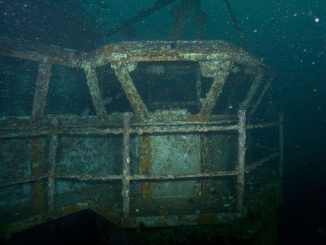
Following 25 years of service, where she received two battle stars for Korean War action and ten for Vietnam War action, Oriskany was decommissioned and held by the Navy as a mobilization asset, but her poor condition and high potential-recommissioning costs following the end of the Cold War made her obsolete. Japanese businessmen attempted to buy her for a place in an outdoor museum exhibit in Tokyo Bay, which Congress allowed, but this would never materialize due to a lack of capital.
Afterward, another group came to buy her for scrap metal, but they too, having tried to tow the ship from Bremerton, Washington, to Vallejo, California, abandoned the project, leaving Oriskany moored on Mare Island where it would be used as the setting for Hell in a Robin Williams film, What Dreams May Come.

Finally, it was decided that she was to be sunk, and after two years of EPA environmental review, 500 pounds of C-4 sent Oriskany stern-down to the bottom of the Gulf in Pensacola, Florida. WATCH a video of drivers exploring the wreck…(2006)
Today is the 52nd anniversary of the opening of Godspell—a musical that would soon become a worldwide phenomenon.
Drama student John-Michael Tebelak wrote the show initially as his master’s thesis at Carnegie Mellon University, and directed the performances for years, both on- and off-Broadway.
The scenes are based on parables in the Bible, mostly from the Gospel of St. Matthew, and focus on the effect that Jesus had on others. One of the songs, Day by Day, reached No. 13 on the Billboard pop singles chart—and the album won a Grammy for Best Score From an Original Cast.
When it opened, at the Cherry Lane Theatre in New York City, the show was not well received by the public—depicting biblical characters as hippie flower children, but the producers fought vigorously to keep the controversial show open—and those efforts paid off.
The off-Broadway hit continued for 2,124 performances, closing in June 1976—and jumped to Broadway that year with Tebelak retained as the director. It was also made into a 1973 movie, and the South African production even broke the apartheid barrier in 1973 when it insisted on keeping the cast multiracial.
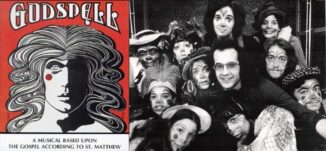
Future iterations of the musical would ‘discover’ soon-to-be stars, including Jeremy Irons, Gilda Radner, Eugene Levy, Martin Short, Paul Shaffer, and Andrea Martin. Today, the show continues to delight audiences around the world, a stunning feat for a script with such humble beginnings. WATCH The Original Cast perform a medley at the Grammys… (1971)
The award-winning music was composed and produced by Stephen Schwartz, and the original cast included Lamar Alford, Peggy Gordon, David Haskell, Joanne Jonas, Robin Lamont, Sonia Manzano (who went on to play Maria on Sesame Street), Gilmer McCormick, Jeffrey Mylett, Stephen Nathan, and Herb Braha (Simon).
San Francisco Examiner wrote, “GODSPELL makes a strong plea for selflessness, brotherly love and an end to materialism and hypocrisy.”
“A frisky, exhilarating little show…a crackling musical funhouse” – NY Magazine
The Boston Globe quipped that it “rattles the soul like a tambourine…it’s HAIR with a halo.”
69 years ago today, the US Supreme Court ruled in the landmark Brown v. Board of Education case, unanimously deciding (9-0) that US public schools could not be racially specific. The lawsuit was filed by the Brown family, black Americans in Topeka, Kansas, after their local public school district refused to enroll their daughter in the school closest to their home, instead requiring her to ride a bus to a blacks-only school further away.
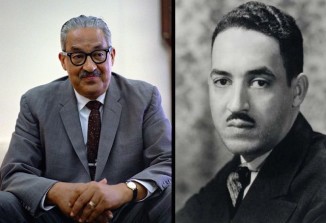
Their victorious lawyer, Thurgood Marshall, later became the first African-American justice of the Supreme Court. The final ruling stated that “separate educational facilities are inherently unequal,” and therefore violate the Equal Protection Clause of the Fourteenth Amendment of the U.S. Constitution. (1954)
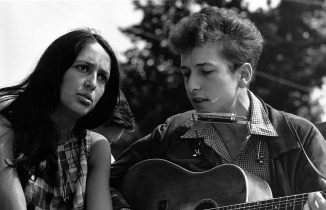
And, 60 years ago today, the first Monterey Folk Festival opened in Monterey, California. The 3-day festival featured a 22-year-old Bob Dylan, Joan Baez, and Peter Paul and Mary. It later morphed into the Monterey Pop festival, which in 1967 showcased the first major live performance in America of Jimi Hendrix, The Who, Ravi Shankar, and Janis Joplin. This show was also the first time Otis Redding played to a huge predominantly-white audience. (1963)
Also on this day 53 years ago, Thor Heyerdahl the Norwegian adventurer and researcher set sail from Africa on a papyrus reed boat to sail across the Atlantic Ocean. The boat, Ra II, was modeled after the ancient Egyptian design to demonstrate the possibility that widely separated cultures of ancient peoples could have made long sea voyages, creating contacts between societies.
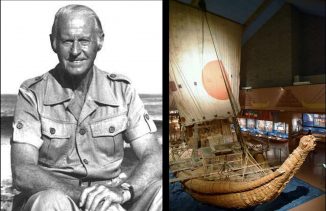
With a background in zoology, botany, and geography, Heyerdahl had previously gained notoriety for his Kon-Tiki expedition of 1947, in which he sailed 5,000 miles (8,000 km) across the Pacific Ocean in a hand-built raft from South America.
Heyerdahl deliberately chose a Ra crew representing a great diversity in race, nationality, religion, and political viewpoint. He chose men from Egypt, Japan, Morocco, Mexico, Italy, the USSR and USA to demonstrate that on their own little floating island, people could co-operate and live peacefully. Only Heyerdahl and American Norman Baker, had sailing and navigation experience, but they successfully sailed to Barbados using the Canary Current. The Ra II is now in the Kon-Tiki Museum in Oslo, Norway. (1970)
SHARE the Milestones, Memories, and Music…



















